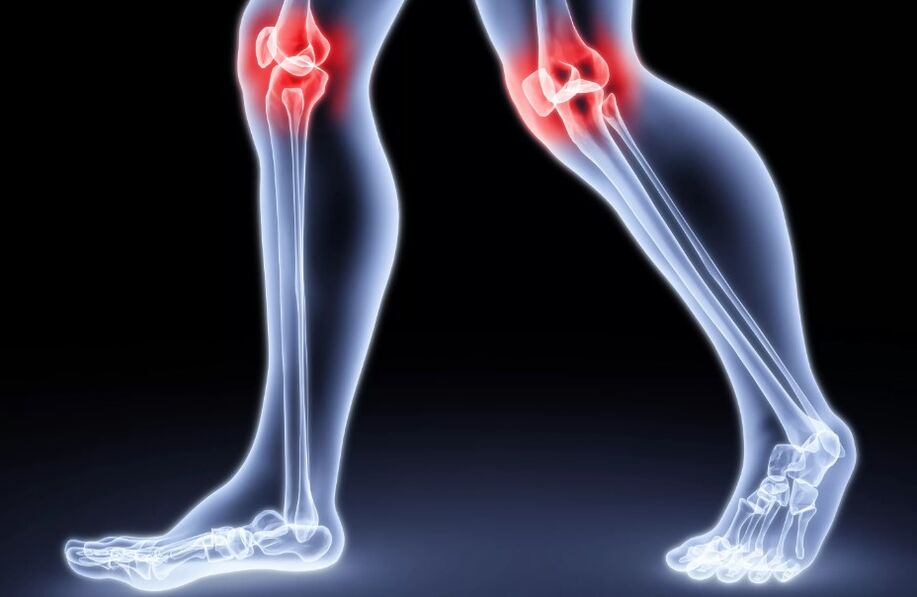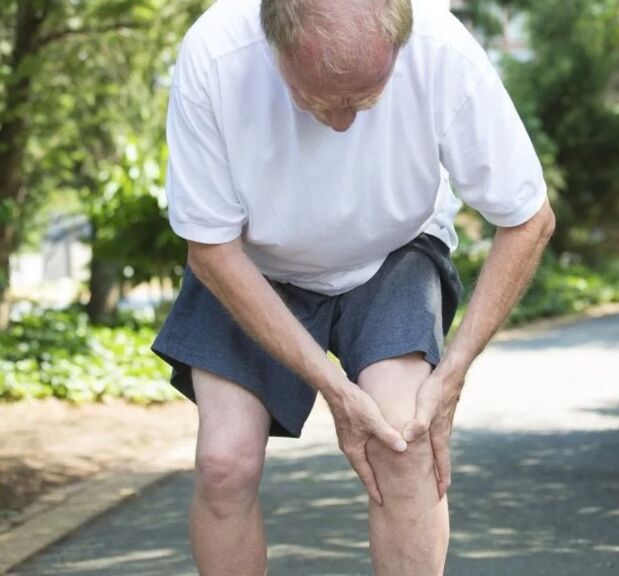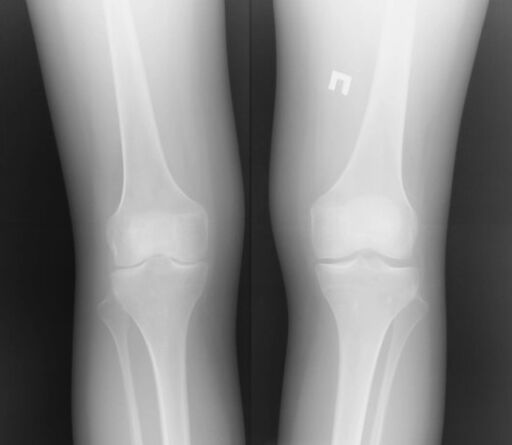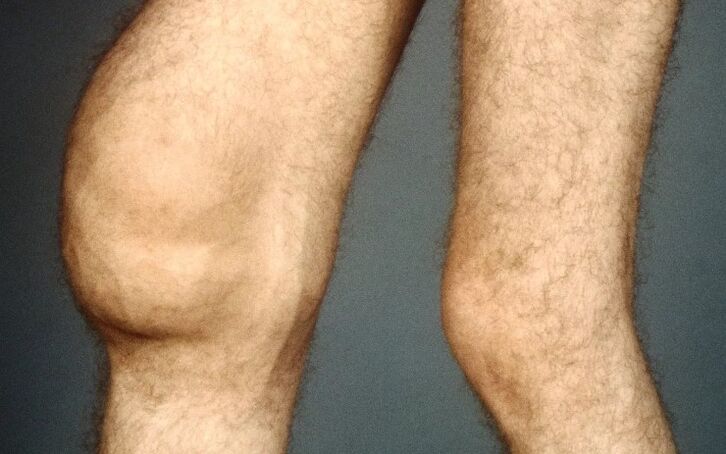Arthrosis is a chronic joint disease in which the cartilage of the joint is progressively destroyed.Since cartilage is destroyed, there are changes in the bone that encompasses the cartilage, and in the joint capsule. What does the word arthrosis mean and what are its synonyms?However, this description is not completely accurate, as there are some inflammatory changes in the joint.In the English countries, "our" arthrosis in the bigger part of the cases is called arthritis (arthritis), ie.Inflammatory joint disease (ITIS SUFFIX), while we are commonly called arthritis, joint damage in rheumatic diseases, infectious, purulent damage, etc.Sometimes they try to correct this disorder.

In modern scientific articles, the term osteoarthrosis is more commonly found (from the Greek words "osteo" - bone, "arthros" - joint, ie, non -loving joint and bone disease).Again, in the English countries, "our" arthrosis of osteosis is called osteoarthritis (acutertritis), ie.Inflammatory disease of the joint and bone.In fact, arthrosis and arthritis are synonymous, and your doctors talked about the same thing.
As we have already noted at the outset, with arthrosis (osteoarthrosis), cartilage is progressively destroyed and bones are gradually involved in the process.With bone arthrosis, a section of sclerosis (compaction) first occurs as a result of loss of shock abuse properties.Then there are points at the ends of the bone (exostosis), which are often mistakenly called "
deposits of salts
"- In fact, with ordinary arthrosis, there are no salts of salts.With a further course of the disease, the bone begins to bend, deformity, cysts form in it: often the disease is called
deformation of arthrosis (osteoarthrosis).In the old medical books you can sometimes find the phrase "Deposit arthrosis", but now it is almost never used." - Всъщност при обикновена артроза няма соли от соли. С по -нататъшен ход на заболяването костта започва да се огъва, деформация, образуват се в него кисти: често болестта се наричаДеформиране на артроза (Остеоартроза). В старите медицински книги понякога можете да намерите фразата „обезобразяване на артроза“, но сега тя почти никога не се използва.

The exact causes of the development of arthrosis have been considered unknown for a long time, so there is another name for this disease - idiopathic arthrosis , ie.arthrosis occurred for unknown reasons or spontaneously.Of course, now scientists are no longer considering arthrosis for mystery and the causes of its development are known.More about the causes of arthrosis, about what primary and secondary arthrosis is below.Hip arthrosis is called coxarthrosis (from the word "Coxa" - the hip joint), the joint of the ankle - curosteoarthrity ("cruuris" - lower leg), knee -
Gonarthrosis ("Jean" - knee).In most cases, arthrosis affects both knee joints, while one of the joints may be more abundant.In this case, the diagnosis sounds like a bilateral gonarthrosis with a predominant damage to the right (or left) knee joint. Often not one, but several joints are affected by arthrosis, so they use another term -
polysteoarthrosis which means the defeat of three or more joints (two symmetrical, for example, both knee and others).In this case, the diagnosis usually sounds as follows: polioaarthrosis with predominant damage to the knee joints (or one of them). Why does knee arthrosis occur?
Knee arthrosis is different.Depending on the causes of its occurrence, primary and secondary arthrosis is distinguished.With age, cartilage update slows down and the destruction of cartilage, which is called a process of degradation or degeneration, begins to prevail.
Артрозата на колянната става е различна. В зависимост от причините за неговото възникване се разграничава първичната и вторичната артроза.
Първична артроза на колянната става
Артикуларният хрущял е постоянно унищожен и актуализиран и обикновено тези процеси са балансирани. С възрастта актуализацията на хрущяла се забавя и унищожаването на хрущяла, който се нарича процес на деградация или дегенерация, започва да надделява.
The process of synthesis and destruction of cartilage is usually balanced.If degeneration begins to prevail, then arthrosis of the knee joint will begin
in most cases the degeneration of the cartilage, that is, the development of arthrosis, occurs after 45-50 years, but sometimes arthrosis can develop for 20 years.Fortunately, the development of arthrosis at such a young age is extremely rare.As a rule, if arthrosis occurs, then at the age of 40-60 years and if by the age of 60 there is no arthrosis, then most likely it will no longer be, or rather, arthrosis will be insignificant (some degenerative changes in the knee joint are found in all the elderly, for example, it is important to do it.Then almost 90%will be signs of arthrosis, but not all of them feel their knees as problematic.This is especially true for men who are often "serious" arthrosis, does not show or cause minimal inconvenience.

Primary arthrosis occurs spontaneously, ieWithout firing factors, it is therefore called idiopathic, which we talked about earlier.
So, we have already realized that age is one of the main factors that determine the development of arthrosis, since the processes of cartilage degeneration begin to prevail with age.Every fourth person over 55 suffers from arthrosis of the knee joints.But we also noted that with age, arthrosis does not develop in everyone.So there are other reasons.Before we list them, we note that there is no basic, basic reason.Knee arthrosis develops in terms of causes, while some play a big role, while others - less.
Първичната артроза възниква спонтанно, т.е. без изстрелване на фактори, следователно се нарича идиопатична, за която говорихме по -рано.
И така, вече разбрахме, че възрастта е един от основните фактори, които определят развитието на артрозата, тъй като процесите на дегенерация на хрущяла започват да преобладават с възрастта. На всеки четвърти човек над 55 години страда от артроза на колянните стави. Но също така отбелязахме, че с възрастта артрозата не се развива във всички. Така че има и други причини. Преди да ги изброим, отбелязваме, че няма основна, основна причина. Артрозата на колянната става се развива по отношение на причините, докато някои играят голяма роля, докато други - по -малко.
Under. More often, women from the knee joint suffer from women.The exact reasons for this are unknown, but you can try to explain the following reasons.The average life expectancy of women is more than in men and, respectively, the average elderly woman will express more degenerative processes.In addition, body weight in women is average slightly higher.The size of the bone in women is less than in men and, combined with greater body weight, this leads to higher pressure in the knee joint and, respectively, more intensive mechanical destruction of cartilage.In the greater part of the cases, arthrosis begins to occur after the termination of menstruation and possibly the deficiency of estrogens determines the development of arthrosis.Note that attempts to treat knee arthrosis in women after menopause from estrogens, of course, are taken, but for now they are unsuccessful.
Weight. Of course, the greater the body weight, the greater the load should be transferred to our knee joints.In addition, overweight reduces physical activity and leads to the weakness of the muscles of the hip joint.For more active cartilage synthesis, movements (without unnecessary pressure) are required and with a sedentary lifestyle processes of cartridge cartridge, they begin to prevail.The muscles of the hip joint are important stabilizers of the knee joint and with the weakness of these muscles the movement in the knee joint becomes more boyad, which accelerates the destruction of cartilage.In general, these processes can be described as a vicious circle: the greater the body weight, the more the knee joint is destroyed, the more pain the pain, the more difficult it is to move, which again leads to excess weight.

A vicious circle of obesity and arthrosis of the knee joint
on the other hand, only arthrosis of the knee joint develops only among full people - those who have no obesity can also suffer from arthrosis.Again, this is because arthrosis has no reason.
Heredity.It has long been noticed that knee arthrosis is a "family" disease.If you have arthrosis or your parents, then, unfortunately, the likelihood of this disease is high for you.Scientists have found many characteristics of a gene that are responsible, for example, for the individual characteristics of the structure of the basic cartilage of cartilage - collagen, but unfortunately these findings are not of practical importance because we cannot influence the prevention or treatment of arthrosis.There is evidence that the legacy of arthrosis is transmitted along the female line, which partially explains their great tendency to this disease. Primary arthrosis of the knee joint is not only found for one reason, but only by their totality.At the same time, knee arthrosis is up to one degree or another in almost all people over 60 years of age, but the severity of arthrosis is very different and not always arthrosis found in radiography is manifested.In fact, it is even more difficult: not every pain in the knee joint in an adult, or moreover, at the age of 40-60, will be accompanied by changes in radiography characteristic of arthrosis.
For example, scientists have found that 76% of the elderly with complaints of knee pain detect arthrosis.
That is, not every pain in the knee joint in an adult is necessarily arthrosis of the knee joint.Тоест, не всяка болка в колянната става при възрастен човек е непременно артроза на колянната става.At the same time, among all the elderly people with knee arthrosis found on an X -ray, only 81% will complain about pain. That is, no arthrosis does not always exist.It happens that the changes in the X -ray are completely insignificant and the pain is strong and the opposite happens: the joint is completely destroyed on the radiograph and one can ride a bike, engage in yoga, work as malarus and such cases that we encounter almost every day.arthrosis inside.The blue arrow marks the outer part of the joint and the orange - the inside of the joint.Take a look at how the bone gap is already: the cartilage is not visible on the X -ray, and it is this precipice that means cartilage.In this case, there is virtually no cartilage on the inside of the knee joint and the bone is already rubbed on the bone.As arthrosis often affects both knee joints, that is, it is bilateral, both legs begin to twist and deformation of the O-shaped form (variant deformation) occurs.
Строго погледнато, няма задължителна връзка на тежестта на болката с тежестта на артрозата на колянната става върху рентгенографа. Случва се, че промените в рентгенографа са напълно незначителни, а болката е силна и се случва обратното: ставата е напълно унищожена на рентгенографа и човек може да кара колело, да се ангажира с йога, да работи като маларус и такива случаи, които срещаме почти всеки ден.

По -често артрозата на колянната става започва с вътрешния (медиален) отдел.
Рентгенографията на колянната става, засегната от артрозата отвътре. Синята стрелка беляза външната част на ставата, а оранжевото - вътрешността на ставата. Обърнете внимание на това как вече е пропастта между костите отвътре: хрущялът не се вижда на рентгенографа и именно тази пропаст означава хрущял. В този случай на практика няма хрущял от вътрешната страна на колянната става и костта вече се разтрива върху костта.
С постепенно абразия на хрущяла от вътрешната страна на колянната става, кракът започва да се огъва. Тъй като артрозата често засяга и двете колянни стави, тоест е двустранна, и двата крака започват да се усукват и се появява деформация на О-образна форма (вариорна деформация).
По-рядко (в приблизително 10% от случаите) външните части на ставата са засегнати от артроза и в този случай започва деформацията на X-образната форма (валгус).
Of course, with the curvature, the load in the internal (with O-shaped) or external (with X-shaped) deformation variants increases even more, and arthrosis will develop faster and more irretrievably.
Arthrosis can start not only in the internal or outer section, but also between the knee glass (patella) and the intercity soles.This option is called patello-fomoral arthrosis and occurs as a rule due to a slope, subluxation of a model, lateral hyperpression syndrome a separate article on our website is released or then patel fractures , for which you can also read in a separate article.We will now talk briefly about the options for secondary arthrosis.
After a traumatic arthrosis of the knee joint.
Injuries to the knee joint, of course, do not add a joint of health and almost all of them, in one way or another, increase the risk of arthrosis.Unfortunately, every person with the gap of meniscus once had the likelihood of developing arthrosis ever.If the medial (internal) meniscus becomes damaged, then arthrosis will soon develop inside the knee joint.Accordingly, if the external meniscus breaks out, then arthrosis will develop in the outer joint of the joint.Note that rupture of the meniscus does not always necessarily lead to arthrosis, the likelihood of its development.Of course, the more the meniscus is damaged, the greater the risk of arthrosis.
След -травматична артроза на колянната става. Нараняванията на колянната става, разбира се, не добавят фуга на здравето и почти всички от тях, по един или друг начин, увеличават риска от артроза.
Едно от най -често срещаните наранявания на колянната става са разкъсванията на Менисци, които са посветени на отделна статия на нашия уебсайт. За съжаление, всеки човек с пропастта на Менискус някога е имал вероятността да развие артроза някога. Ако медиалният (вътрешен) менискус се повреди, тогава артрозата по -скоро ще се развие във вътрешността на колянната става. И съответно, ако външният менискус избухне, тогава артрозата ще се развие във външната става на ставата. Обърнете внимание, че разкъсването на менискуса не винаги е задължително да води до артроза, вероятността за неговото развитие. Разбира се, колкото повече менискусът е повреден, толкова по -голям е рискът от артроза.

Another reason for the development of knee arthrosis is the ruptures of the ligaments, for example, the rupture of the anterior cross ligament.As a result of rupture of the ligament in the joint, instability may occur, which, of course, will lead to damage to the cartilage and the development of arthrosis.Naturally, cartilage damage depends on the degree of instability that may be different.Almost every internal articular fracture is accompanied by the displacement of fragments and thus the shape of the joint surface changes.The step, which occurs as a result of the change inevitably, leads to the progressive destruction of cartilage and the appearance of arthrosis.Of course, the more severe the break, the greater the intra -articular fracture of the fragments, the more cartilage is damaged and the risk of arthrosis is higher.After severe multi -round fractures of the tibial warts, arthrosis develops in almost 100% of cases, even despite the perfect osteosynthesis surgery (elimination of bone fragments and fastening with screws, slabs, etc.)


















































